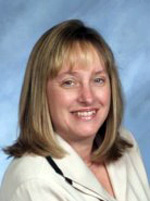by Joan Rhodes
 I’m a Pittsburgh kind of girl! This fact implies I know something about snowy winters, Primanti’s sandwiches, and Steeler football. However, one cannot be from Pittsburgh without also having knowledge of one of our most famous native sons, Mr. Fred Rogers. Many of you recognize Fred by his lace up sneakers and cardigan sweater, his creation - the Neighborhood of Make-Believe, and his genuine concern for young children. Mister Rogers was a surprising man, seemingly humble and wise, with kindness for any neighbor he might meet during his daily television program. His efforts to create high quality educational television programming for youngsters earned him a place in the hearts of many children, parents and educators.
I’m a Pittsburgh kind of girl! This fact implies I know something about snowy winters, Primanti’s sandwiches, and Steeler football. However, one cannot be from Pittsburgh without also having knowledge of one of our most famous native sons, Mr. Fred Rogers. Many of you recognize Fred by his lace up sneakers and cardigan sweater, his creation - the Neighborhood of Make-Believe, and his genuine concern for young children. Mister Rogers was a surprising man, seemingly humble and wise, with kindness for any neighbor he might meet during his daily television program. His efforts to create high quality educational television programming for youngsters earned him a place in the hearts of many children, parents and educators.
Mr. Rogers also had foresight. Prior to his death in 2003, he began working on plans for the creation of a center to advance the fields of early learning and children’s media. This international center housed at Saint Vincent College in Latrobe, Pennsylvania brings together those interested in capitalizing on the positive potential of television and new media for supporting the development of children from birth to age 5. The Fred Rogers’ Center for Early Learning and Children’s Media serves as “a catalyst for communication, collaboration and creative change” (Fred Rogers’ Center for Early Learning and Children’s Media, 2012, np).
A quick visit to the Fred Rogers’ Center website at www.fredrogerscenter.org is not possible. Once you drop in, you find so much information that minutes quickly turn into hours of engaged reading and viewing. The site clearly outlines the center’s major initiatives for bringing together educators and researchers to explore the role of media as it relates to early childhood. General information about the first two initiatives, the Fred Rogers Center Fellows program and the Fred Forward Conference Series highlights the opportunities for professional development offered by the center. The Fred Rogers Archive includes information about Mr. Rogers including an extensive digital library for research related to educational television and early childhood development. An on-line multimedia exhibit detailing Fred Rogers’ childhood and career is a highlight of the archive section.
What really captured my attention as an educator was the expansive resource section that housed links to media education websites, issue briefings, and publications. Researchers and educators from a variety of disciplines contribute syllabi, lesson activities and research related to media and early education to the Curriculum Toolkit, an open, accessible resource to support early childhood educators and those interested in media literacy. The video entries from Mister Rogers’ Neighborhood address challenging topics from dealing with anger to the death of a pet and are in lesson plan format to share with adult learners. These materials would be particularly effective when working with pre-service educators.
Even with all of these wonderful tools, the Fred Rogers’ Center has outdone itself with its web-based early learning environment hosted by Ele, a cartoon avatar who easily convinced me that I wanted to try some of the on-line activities for improving early language and media literacy skills. The activities are designed to support home-based educators and underserved teachers working with young children using video, text and social media. So far, my favorite activity uses music to encourage establishing daily routines. You might like to test out some of the great selections like Brush Your Teeth, Clean Up and We Love to Read at Everyday Grooves. The songs can even be downloaded onto an iPod for use during those long, cold Pennsylvania nights!
References:
Fred Rogers’ Center for Early Learning and Children’s Media. (2012). Retrieved from www.fredrogerscenter.org
Joan Rhodes is an Associate Professor and Chair of the Reading Program at Virginia Commonwealth University.
This article is part of a series from the International Reading Association Technology in Literacy Education Special Interest Group (TILE-SIG).
<a href="http://engage./TeachertoTeacher/Directory/CommunityDetails11/CommunityDet
ails111/">

